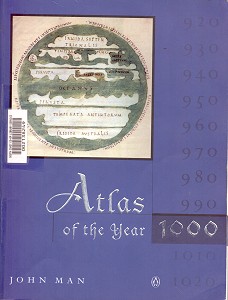 |
surfresearch.com.au
vikings in nth america, 1000 |
Viking Settlement of North America, 1000.
Extracts from
Man, John: Atlas of the Year 1000.
Penguin Books Ltd, 27 Wrights Lane, London W8 5TZ, England.
Penguin Books Australia Ltd, Ringwood, Victoria, Australia, 1999.

